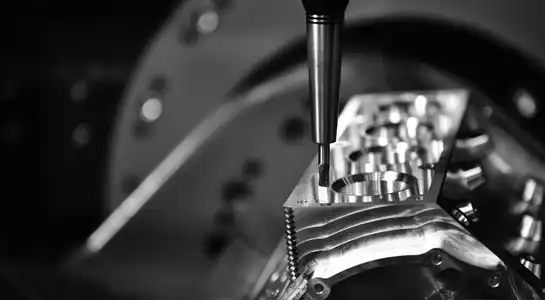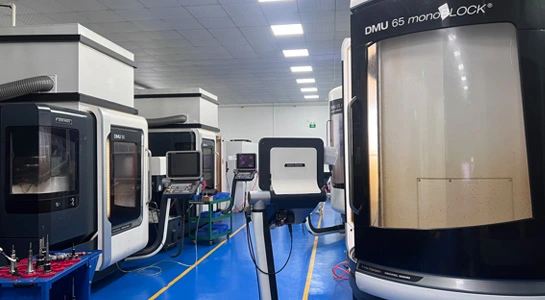What Are Aerospace Precision Components and Their Applications?
Aerospace precision components are highly engineered parts manufactured to exact specifications for aircraft, spacecraft, satellites, and unmanned aerial vehicles. These components require exceptional accuracy, often within tolerances of thousandths of an inch, and must withstand extreme conditions including temperature variations, pressure changes, and mechanical stress. From turbine blades and structural brackets to avionics housings and hydraulic fittings, these parts form the backbone of modern aviation and space exploration systems.
Understanding Aerospace Precision Components: Materials and Manufacturing Standards
Advanced Materials for Extreme Performance
The aerospace sector depends heavily on advanced materials engineered to withstand extreme operational demands. Titanium alloys, with their superior corrosion resistance and strength retention at elevated temperatures, are indispensable for high-stress areas such as turbine blades and engine housings. Aluminum alloys, particularly 7075 and 2024 grades, remain critical for fuselage and wing structures due to their machinability and strength-to-weight efficiency. In recent years, carbon fiber composites have revolutionized aerospace design, enabling lightweight yet resilient solutions for both structural and interior applications.
Stringent Manufacturing Standards and Quality Control
Producing aerospace precision components requires strict compliance with globally recognized standards like AS9100, NADCAP, and various defense specifications. These standards establish requirements for material traceability, production processes, and quality inspection. Each component must pass dimensional checks, surface integrity evaluations, and non-destructive testing before approval. Extremely tight tolerances, sometimes within ±0.0001 inches, demand advanced CNC machining under climate-controlled environments. Even slight temperature fluctuations during manufacturing can cause unacceptable deviations, making environmental stability and process discipline vital to ensuring repeatable accuracy in aerospace production.

Certification and Documentation Requirements
Documentation in aerospace manufacturing is more than a formality - it is a regulatory necessity that ensures complete traceability. From raw material certificates to process validation records and inspection reports, every stage of production must be documented. First Article Inspection (FAI) is a key milestone, verifying that the initial production batch conforms to design intent before large-scale manufacturing. This comprehensive recordkeeping provides a transparent history of each component, enabling accountability, supporting maintenance activities, and ensuring compliance with both civilian aviation authorities and military oversight bodies.
Critical Applications in Modern Aerospace and Defense Systems
Commercial Aviation Components
Commercial aircraft contain thousands of precision-manufactured components, each serving specific functions within complex systems. Engine components such as compressor blades, combustion chambers, and turbine discs require exceptional precision to maintain efficiency and safety. These parts operate under extreme conditions, experiencing temperatures exceeding 1,500°F while rotating at speeds up to 20,000 RPM.
Structural components including wing spars, fuselage frames, and landing gear assemblies form the aircraft's primary structure. These parts must withstand repeated stress cycles throughout the aircraft's service life, which can span decades and millions of flight hours. Modern manufacturing techniques enable the production of complex geometries that optimize strength while minimizing weight, contributing to improved fuel efficiency and reduced operating costs.

Defense and Military Applications
Military aerospace applications demand aerospace precision components that meet even more stringent requirements than commercial aviation. Fighter aircraft components must withstand extreme G-forces and rapid temperature changes while maintaining precise functionality. Missile guidance systems require components manufactured to microscopic tolerances to ensure accuracy over long distances.
Electronic warfare systems incorporate specialized housings and mounting brackets designed to protect sensitive electronics from electromagnetic interference and environmental hazards. These components often feature complex internal geometries that would be impossible to manufacture using traditional methods, making advanced CNC machining and additive manufacturing essential for defense applications.
UAV and Satellite Technologies
Unmanned aerial vehicles represent a rapidly growing segment of aerospace manufacturing. UAV components must balance weight constraints with durability requirements, as these systems often operate in harsh environments without regular maintenance access. Propeller hubs, gimbal assemblies, and sensor mounts require precise manufacturing to ensure stable flight characteristics and accurate data collection.
Satellite components face unique challenges including exposure to radiation, extreme temperature cycling, and the need for absolute reliability. Solar panel deployment mechanisms, antenna positioning systems, and thermal management components must function flawlessly for years without maintenance. The cost of satellite deployment makes component reliability paramount, driving manufacturers to implement exhaustive testing protocols.
Advanced Manufacturing Technologies for Aerospace Components
Precision CNC Machining Capabilities
Modern CNC machining centers equipped with five-axis capabilities enable the production of complex aerospace components from solid billets. These machines achieve remarkable accuracy through advanced control systems and real-time monitoring. Tool path optimization software calculates the most efficient cutting strategies while maintaining required surface finishes and dimensional accuracy.
High-speed machining techniques reduce production time while improving surface quality on aluminum and titanium components. Specialized cutting tools designed for aerospace materials incorporate advanced coatings that extend tool life and maintain consistent performance. Coolant delivery systems prevent thermal distortion during aggressive material removal, ensuring parts remain within specification throughout the machining process.
Rapid Prototyping in Aerospace Development
Rapid prototyping technologies have transformed aerospace precision components development by dramatically reducing the time from concept to testing. Engineers can evaluate design iterations quickly, identifying potential issues before committing to expensive tooling. This iterative approach enables optimization of component geometry for both performance and manufacturability.
Additive manufacturing techniques complement traditional machining by enabling the production of complex internal features and lightweight lattice structures. Metal 3D printing technologies produce functional prototypes that closely match the properties of final production parts. This capability proves particularly valuable during the early development stages when design changes occur frequently.
Testing and Validation Processes
Comprehensive testing ensures aerospace components meet all performance requirements before entering service. Coordinate measuring machines (CMMs) verify dimensional accuracy using touch probes or optical scanning systems. Surface roughness measurements confirm that critical surfaces meet specifications for aerodynamic performance or sealing requirements.
Non-destructive testing methods including ultrasonic inspection, dye penetrant testing, and X-ray analysis detect internal defects that could compromise component integrity. Fatigue testing subjects components to repeated stress cycles, validating their ability to withstand operational loads throughout their design life. Environmental testing chambers simulate altitude, temperature, and humidity conditions to verify component performance under realistic operating conditions.
Conclusion
Aerospace precision components represent the pinnacle of manufacturing excellence, combining advanced materials, stringent quality standards, and cutting-edge production technologies. As the aerospace industry continues evolving toward more efficient and capable systems, the demand for high-precision components will only increase. Success in this field requires not just technical capability but also a deep understanding of aerospace requirements and an unwavering commitment to quality at every stage of production.
FAQs
What tolerances are typical for aerospace precision components?
Most aerospace components require tolerances between ±0.001 to ±0.0001 inches, depending on the application. Critical engine components and guidance systems often demand the tightest tolerances.
Which certifications are essential for aerospace component manufacturers?
AS9100 certification forms the foundation, with additional requirements including NADCAP for special processes, ITAR compliance for defense work, and specific customer approvals.
How does rapid prototyping benefit aerospace development?
Rapid prototyping accelerates design validation, reduces development costs, and enables testing of multiple design iterations before committing to production tooling, significantly shortening time-to-market for new aerospace systems.
Your Trusted Aerospace Precision Components Partner | BOEN
BOEN Prototype specializes in manufacturing high-precision aerospace components as your reliable supplier and manufacturer. Our advanced CNC machining facilities and rapid prototyping capabilities enable us to deliver complex parts meeting the strictest aerospace standards. As an experienced factory serving global aerospace customers, we provide comprehensive solutions from prototype development through low-volume production. Contact our expert team at contact@boenrapid.com to discuss your aerospace component requirements.
References
Johnson, M.K., & Smith, R.L. (2023). Advanced Materials in Aerospace Manufacturing: Properties and Applications. Journal of Aerospace Engineering and Technology, 45(3), 234-251.
Chen, W., Anderson, P., & Williams, D. (2024). Quality Control Systems for Precision Aerospace Components. International Journal of Manufacturing Excellence, 18(2), 112-128.
Rodriguez, A.B., Thompson, K.J., & Lee, S.H. (2023). CNC Machining Strategies for Titanium Aerospace Components. Precision Manufacturing Quarterly, 31(4), 445-462.
Patel, N.R., & Brown, C.E. (2024). Rapid Prototyping Technologies in Aerospace Development Cycles. Aerospace Innovation Review, 12(1), 78-95.
Miller, J.T., Davis, L.M., & Wilson, G.R. (2023). Testing and Validation Protocols for Critical Flight Components. Journal of Aerospace Quality Assurance, 29(3), 301-318.
Taylor, E.F., & Martinez, H.A. (2024). Manufacturing Standards and Certification Requirements in Modern Aerospace Production. International Aerospace Manufacturing Journal, 37(2), 156-173.

How Can We Help?

Your Trusted Partner in Rapid Manufacturing.



